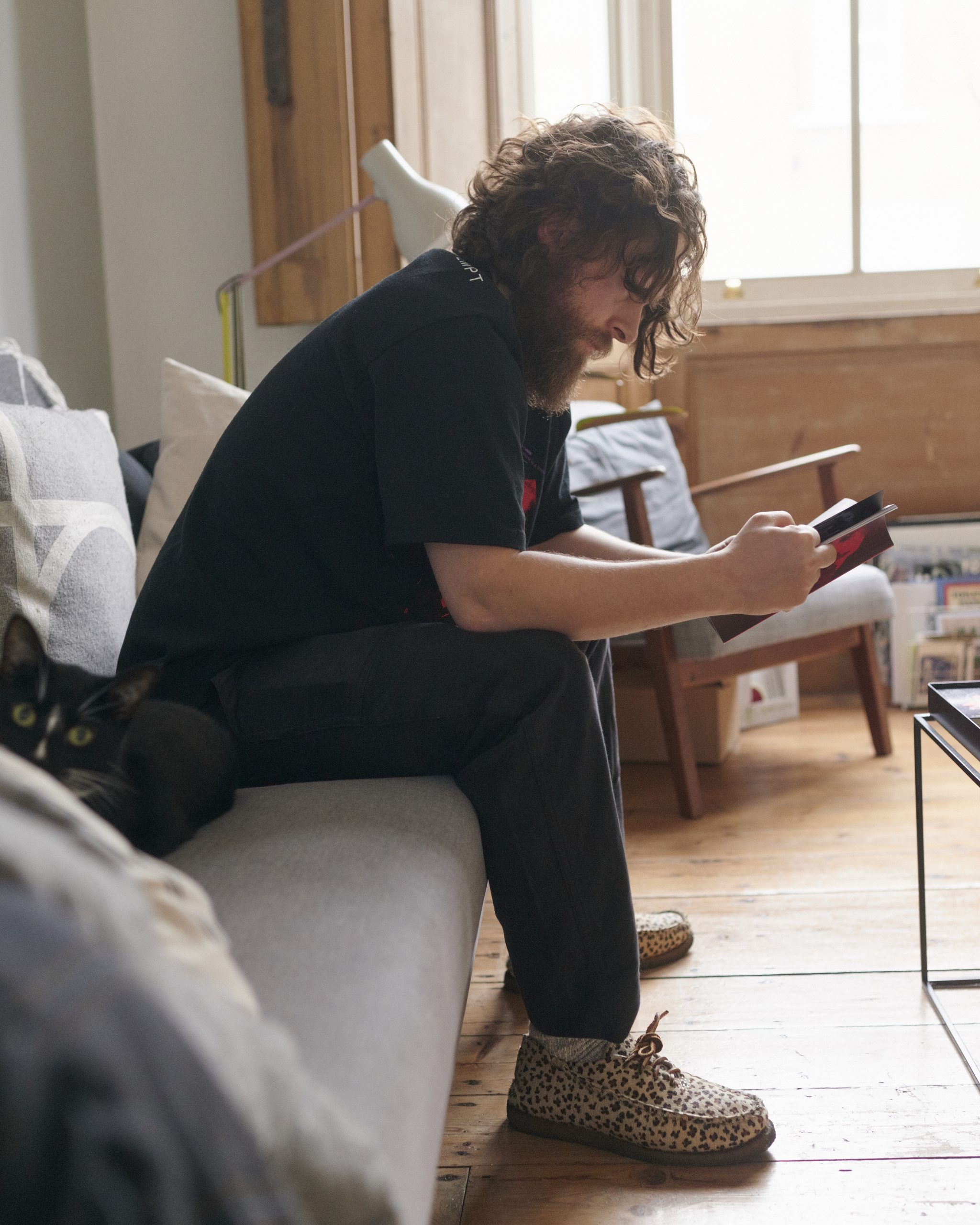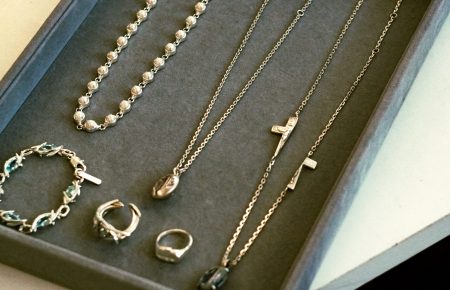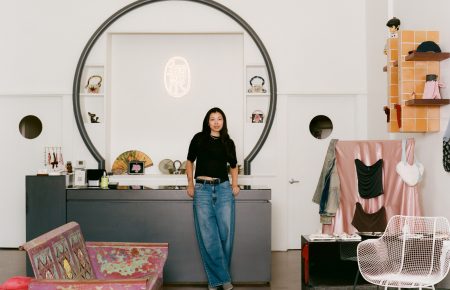502 Bad Gateway is the best life decision Seth Footring has made in recent years.
By day, Seth works in the photo and eCommerce department of ASOS in London, by night—and in all other spare waking hours—he focuses his efforts on being the creator and Editor-in-Chief of a brand new men’s fashion publication.
The first issue of 502 Bad Gateway was released in January this year and contains long articles about Tender, Olubiyi Thomas, the Massimo Osti Archive, and Sampaix Studio, plus graphic elements that are decidedly in the opposite direction of the average glossy fashion mags.
After making the decision to start and complete a personally driven project, Seth’s choices revolved around bringing to life the type of publication he wanted to read and indicating that there is a “right” way to operate in the fashion industry that isn’t talked about sufficiently.
Charis Poon spoke with Seth in London about the necessity for 502 Bad Gateway’s existence and the trials he underwent to make it happen.
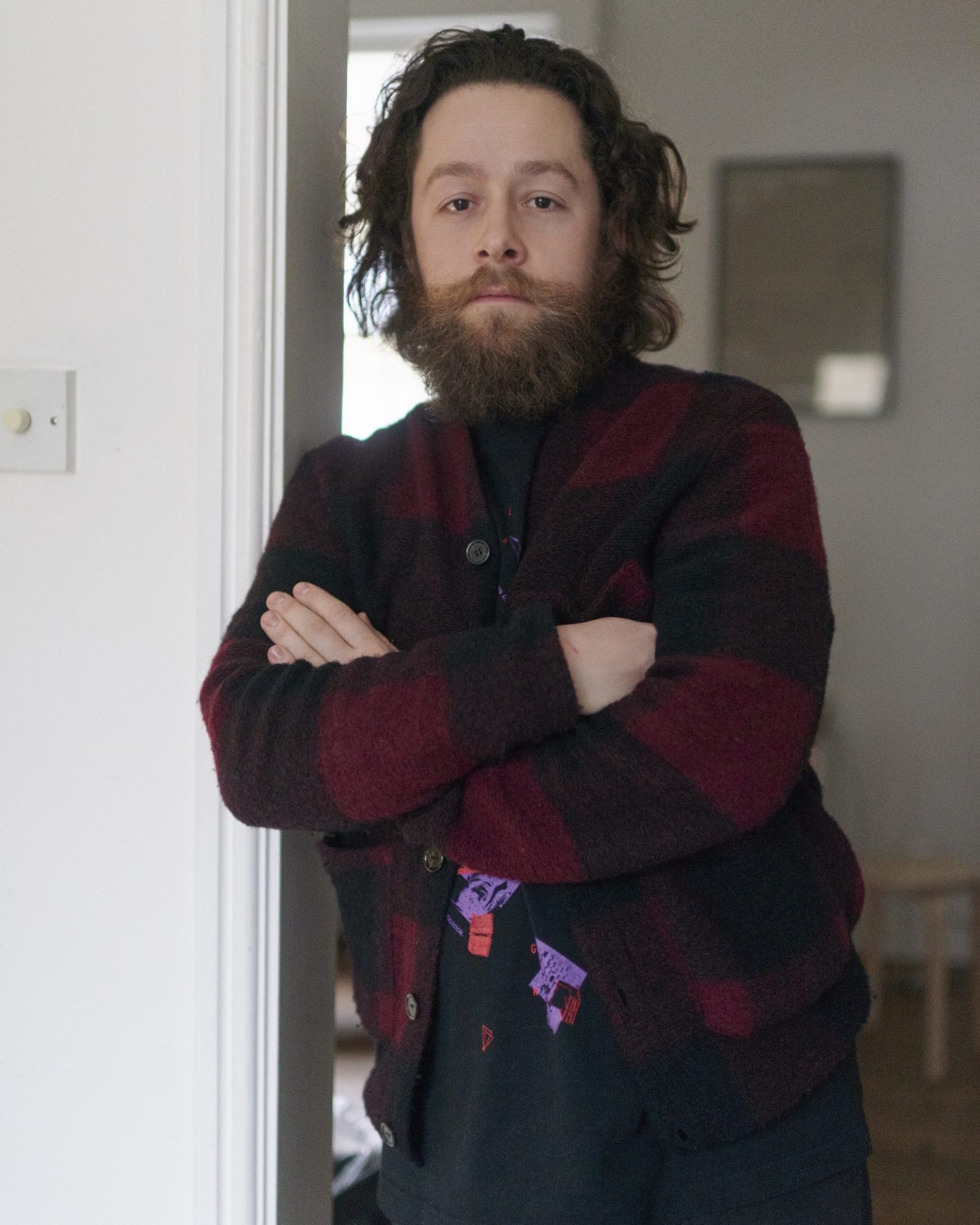
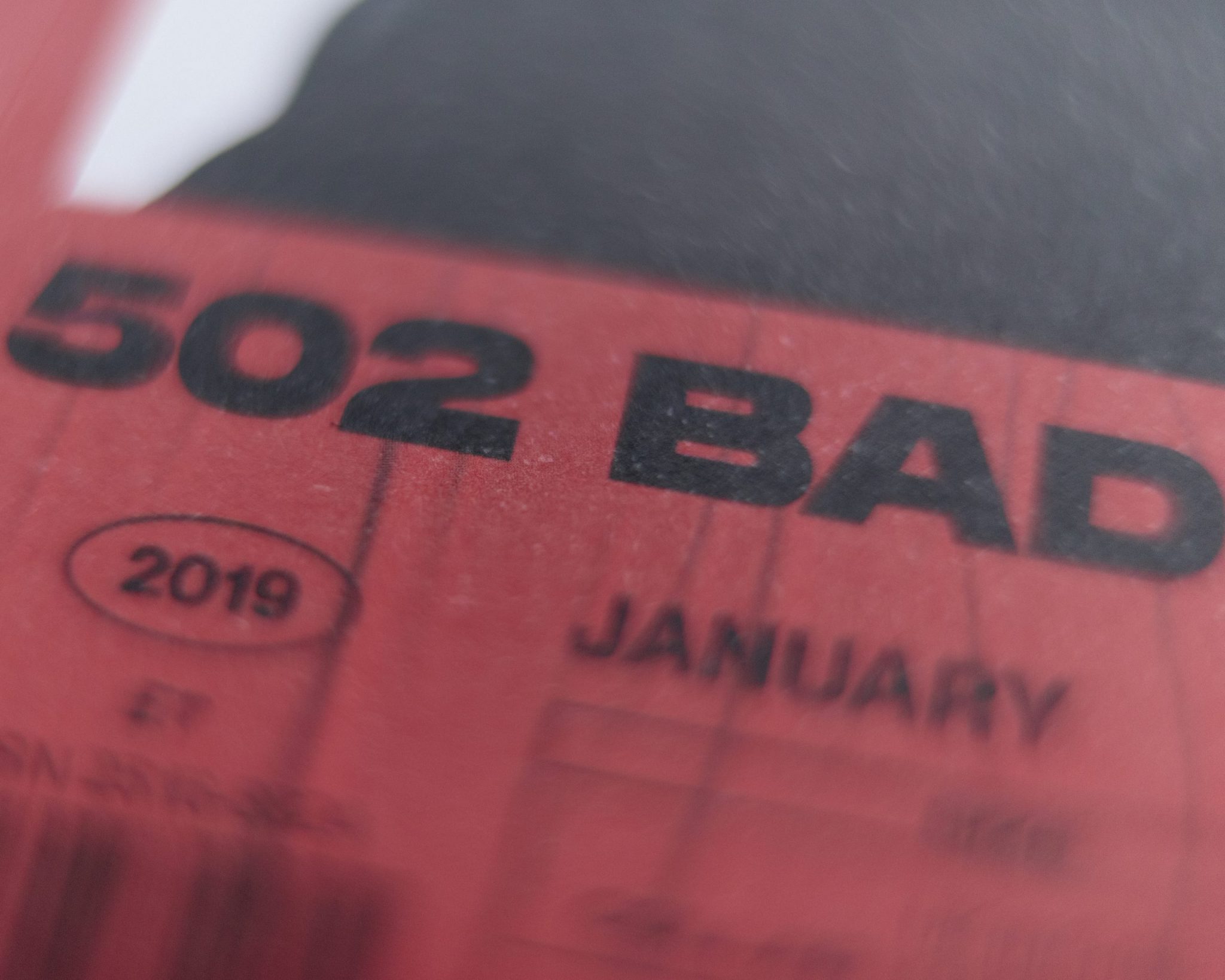

A spread from the Issue 01 feature on the Massimo Osti Archive.
At MAEKAN, the story defines the medium. Some stories function best as written text, others hope to capture the emotion through an intimate audio experience. In cases such as this audio story, the transcripts we provide are done to the best of our ability through AI transcription services and human transcribers. We try our best, but this may contain small errors or non-traditional sentence structure. The imperfection of humans is what makes us perfect.
Seth Footring: My name’s Seth and I created and am the editor of 502 Bad Gateway which is—I guess I’ve been describing it online as a good life decision—but really it’s a men’s magazine that focuses on men’s style and has a strong graphic element and has a strong wordy article element to it.
My day job is at ASOS where I work in the eComm studios which is a pretty intense 9 to 5, to be honest. This was kind of a way to bring some things together outside of that.
Charis Poon: Would you explain how you wound up with this name or what the name means to you?
Seth: So I made a zine with the same name and a similar kind of aim where I was trying to unearth things that people don’t talk about. In that I did a feature on Eastern European brands and why I thought Kanye West was really great.
Charis: How does the name tie in with that? I looked it up, by the way.
Seth: Internal server error. It’s where what you want to access online doesn’t exist or the name of the file is wrong. I wanted it to relate to internet culture but to illustrate that it was a real world physical thing.
Almost the thinking behind it was that people might encounter 502 bad gateway on their computer so they should pick something in the real world up and do that instead. Also, one thing I didn’t do was google it or see if you could get a 502 Bad Gateway Instagram handle, which you can’t. If you google 502 bad gateway there’s a lot of “Why am I getting this message? What does this mean?”
Charis: It’s funny because maybe it is poor strategy to not look it up online before naming it—on the other hand, because you want people who encounter website errors to pick up your magazine, you’ve already targeted your audience because everyone who googles 502 bad gateway is having an issue.
Seth: Yeah and I kind of just stuck with it, decided, and didn’t even think
twice.
Charis: Good commitment. What compelled you to want to do this?
Seth: Oh, definitely boredom. I don’t think I’d be blowing my own trumpet too much to say that I’m good at my 9 to 5 so I don’t feel particularly challenged whereas this was quite a learning curve just in terms of it pushing me to learn more stuff.
Charis: I think it’s okay to say you’re good at your job and I guess the nature of what you do is not changing drastically, otherwise in that situation you might feel like you had room to grow.
Seth: Yeah, exactly. I’d applied for a promotion that I didn’t get, but in the end I was completely fine with because it was more of an office type manager than in any kind of creative role. In a lot of ways as well this was like me getting to meet my heroes. There’s a couple of people in there that I’ve always… Well, everyone in there that I’ve worked with I’ve always looked up to.
Charis: Yeah, I was going to ask you as well. I have a feeling that a large part
of this is chasing your own interests and your own passion?
Seth: Do you ever notice when you’re reading various articles or you see different imagery and then that shows you that something is happening, the zeitgeist.
I felt like in the run up to this I was reading a lot of things that were interviews with people saying that they just make things that they want to wear. I wouldn’t know how to put it together for someone else to read if that makes any sense, I’m doing what I know and I know that I like.
Charis: It’s like writing what you want to read.
Seth: Yes, and about subjects that I would want to read and set out in a way that I would want to look at as well.
Charis: What do you wish you’d known when you started that you learned along the way?
Seth: Oh, I got a few really interesting pieces of advice. As a process I see it like: after you have loads of fun designing stuff, making stuff, meeting these people, writing it up, maybe staying up late trying to finish stuff on time and then you end up with a load of magazines on a palette and you’re kind of like, “Oh cool, what do I do now?”
Making the content of the magazine is like 45%. The actual business distribution and promoting it side is probably more and harder work. In a creative way it’s not as sexy, it’s less interesting.
Charis: Is that the challenge that you’re facing right now?
Seth: Yeah, absolutely. Things that I learned along the way? When someone delivers you something, especially photos, you don’t have to just put them on the page, you can alter them slightly, crop them how you want, I guess to tell more of a story with them.
I spent a lot of time making sure that the articles flowed in a logical way. One of the things that was really hard about it was being the writer and the editor. It’s difficult because you look at it and you look at it and you’re like, I think this is okay. Then you read it a week later and it’s trash and then you go back over it and the same thing happens.
Charis: Yeah, when do you know to draw the line?
Seth: Yeah, and is anyone going to care if you’ve structured it one way or the other if they both make sense? Allowing myself to be okay with it as it is.

“One of the things that was really hard about it was being the writer and the editor. It’s difficult because you look at it and you look at it and you’re like, I think this is okay. Then you read it a week later and it’s trash and then you go back over it and the same thing happens.”
— Seth Footring, creator of 502 Bad Gateway

A spread from the feature on Sampaix Studio shot by Sebastian Petrovski.
Charis: In the first 45% of making the publication, was there anything related to your day job? Did anything carry over from your day job into this or was the feeling that it was incredibly different to what you do 9 to 5?
Seth: I kind of ragged on my day job a bit but realistically the good elements of it are that all the people you work with are super nice. It put me in contact with a large number of freelance creatives so everyone that I’ve worked with I’ve met through there.
Charis: The people, the photographers, a lot of them?
Seth: Yeah probably around 90%. The editorial designer, Xuan, I found her through The Dots which is an online talent website to find jobs and to find people to work for you and stuff. Then a couple of friends from home, but a large majority were in some way involved in that.
Charis: Yeah, how important was it to you that making this was a collaborative thing? Or do you think of it as an individual, personal project?
Seth: I didn’t intend it to be as focused on myself. I recognized early on that if I’d really wanted to, I think I’m probably the kind of person that would try to do as much as possible by myself. The collaborative element of it is probably something that I really learned as well. Having to work out how to ask people to do things and thinking about how I wanted to work with people in terms of giving them direction, what I thought of what they gave me back.
Charis: Did you enjoy that element of it or was it more out of necessity?
Seth: No, I did. That feeling when you say something to someone like, “Can you do this in this way?” So for example, the graphics in the Massimo Osti archive one where it’s the jacket next to the graphic, that was me briefing Ruben, the designer, and similarly for the editorial design, that was very collaborative, me and Xuan worked quite closely together. In fact, all of the photo editorial is a very big collaborative effort. I had an idea or concept in my head but I think the real skill in the people that I work with is for me being able to show them a few images and say a few sentences and for them to be like, “Okay this is how this is going to work.”
Charis: I think that process of collaboration is a mix of being vulnerable with your ideas.
Seth: Oh, 100%.
Charis: And then also trusting, like you said, that this person you’re speaking to is going to convert it into something even better than what you pictured. That’s like an ideal situation.
Seth: Yeah. There were times when I had to think okay, is this how I want things to go? I’m very happy with how everything worked out so evidently it did.
Charis: Do you have an example of one of these features that kind of took a turn towards something that you hadn’t imagined?
Seth: Yeah. So the BYBORRE one, I approached the stylist and photographer and the stylist wanted to use industrial stuff and do a lot of tying things around waists, cabling and roping and stuff like that and I was thinking that’s not necessarily what I thought the reaction would be and you have to sit back and think about it a little bit and question whether it’s going to work.
I always went into it thinking that I don’t want to be the guy who has a tantrum if someone doesn’t agree with me. I’m a big believer in trusting what people do. If you’re a graphic designer and I’m trying to tell you what I want, at some point I have to just believe or know that you know exactly what you’re talking about from a position of better taste and training than I would ever hope to. It felt good to do that actually.
Charis: It’s really hard to just put yourself aside, even in what you’re describing, trusting someone else’s talent and ability, it’s difficult to overcome the part of your mind where you’re like, well I do know what’s best.
Seth: Yeah, letting go. Professionally letting go is tricky to do.
Charis: I don’t know if it was intentional—probably not, because I don’t know how much you pre-interviewed—but a lot of your interview subjects also talked about collaboration or working with other people.
Seth: In some cases there’s a lot more stuff to draw on, so like the Tender one, I did a lot of early interaction on Superfuture message boards. That’s like a treasure trove of actually William Kroll writing this stuff so…
Charis: Yeah, first-hand material.
Seth: …Legitimately what he thinks and that’s his reaction. Whereas Olubiyi Thomas hasn’t done that many interviews, I mean I read them all, they’re not really in depth because he’s kind of new. I wouldn’t talk to them until I got there as a conscious decision.
I think sometimes you can have a better pre-interview chat than you have during the actual interview and then you think damn, I wish I had just recorded the first one and you can’t just record a chat between you because the subject will become more guarded.
I would do a lot of research and really think about what I could ask them that either they hadn’t been asked before or that would be a little bit prying. To look at things that aren’t normally addressed like in the Tender one we talk a lot about supply chain and that kind of thing.
Charis: I noticed as well that a lot of the people spoke in detail about their systems of production.
Seth: Yeah, I think that’s really what ties the whole thing together, I didn’t realize this until the end.
Charis: What is it that you think ties it together?
Seth: That it’s product design, fashion as product design rather than making ‘a look’. I think all of those people do that, I don’t think you can be successful in fashion without having an aesthetic or a look about what you do but all of them in one way or another have very interesting supply chains.
Charis: It’s interesting to hear you say that it wasn’t necessarily pre-planned but something you saw after but I guess it comes out of this being of yourself, so it’s things that you’re interested in.
Seth: Yeah, it’s very easy to make fashion content that’s just like: here’s someone beautiful and/or famous wearing some cool clothes in a cool place shot by a cool and/or famous photographer whereas I think it’s equally important to find out where things come from.
You can look at that in two ways: you can look at that culturally, so why things are cool or important; also in a physical way like where has this come from, where does it get made, what’s in it? I guess there’s a lot of focus at the moment on trying to work out things like that but it’s so unbelievably hard to work out what’s right and wrong about it.
Is it better to buy an old plastic coat or buy a new cotton one? On the face of it maybe you choose the cotton one purely on ethical grounds but it’s an impenetrable question, you have to make best guesses.
So a lot of the people that were in it have some element of consciousness about them, but, equally, don’t make things just for the sake of being ethically sound. The output is beautiful and on its own, without it being labelled anything necessarily.
Charis: Yeah, it is complicated and I think, not that they contradict each other but, the different people that you spoke to have different takes on it.
Each of them has set up their own processes and supply chains and are involved on material levels at different phases like Tender has its own flock of sheep. That’s one person’s decision in terms of what do I find ethical or what am i most interested in?
Seth: Exactly, and I don’t think all of them are at the same place either so obviously not everyone can go and custom-make their own knitting programs like BYBORRE and some of the people, like my friend Jared who does Sampaix, is not in a position to go and buy a flock of sheep. Yeah, I think it’s interesting to see different people’s takes on it.

502 Bad Gateway on shelf at magCulture, 270 St John Street, London.
Charis: What do you think is the norm right now in fashion?
Seth: As to what?
Charis: As to supply chain and production? Do you have a feeling on what the average is?
Seth: Yeah, I’m coming from an incredibly hypocritical background because I work at this big fast fashion company, so it’s probably very much subconsciously fed into what this ended up looking like.
I think anywhere in the world, whatever your company is, making everything there from start to finish and finding raw materials and skilled labour to do it at the right price, you could do that all in one country but nobody does that.
The norm would be that you have a company in Europe, all your manufacturing would be in probably Eastern Europe or on another continent.
They would probably ship in the materials from somewhere else as well, and then when you scale it up, like even with this I’ve been posting magazines to Europe and America and that’s like, okay so how does that all feed in in a responsible kind of way?
Ultimately, to do business on that kind of scale there’s an inherent amount of environmental irresponsibility, and then if you look at it on the other side, big companies provide huge amounts of people with jobs.
Charis: Yeah, It’s not a straightforward weighing of scales.
Seth: Yeah, you’re measuring different things really. One thing that really gets me thinking is that you can buy and make a conscious decision to wear something that might be amazing quality and good for the environment but anyone who does that is already niche.
The average guy isn’t going to be doing that and ultimately if you did want to make some kind of large scale change you need to make it available for the average guy who doesn’t care, who wants £40 jeans but how can you make them want that or provide him that for the same price so I think that’s actually what would make a difference.
Charis: Yeah my second half of that question is where do you think fashion is heading?
Seth: I was actually going to say, I don’t think luxury is that dissimilar but I think it is noticeably different. I still think they do the same thing, shipping things throughout the world and getting raw materials from different places but there’s a chance that with a higher quality of manufacture it’s generally better for the environment. Where I think it’s going? I don’t know, it’s a very interesting question.
I think you’re almost asking where society’s going and there’s so many things that you could take off that so the question is almost: does society follow fashion or does fashion follow where people go?
Because if all of a sudden everybody is loads more environmentally conscious then fashion will change because ultimately money talks. Recently in the UK at least, there’s been a big fall off in sales in fashion. I don’t know if that’s across the board but definitely at a high-street level.
It could be just people not having any money after Christmas but it also could be people being more conscious about how and where things are made, so I think probably overall it’s going there but it’s very easy for something to be flavor of the month.
Charis: My question was very broad, I didn’t narrow it down to something specific in fashion but I was generally thinking about this trend towards ethical consumption and responsibility at every level whether you’re a creator or consumer and I guess what you’re saying, which I agree with, is will society consider sustainability a trend and fall off of it and therefore fashion stops caring or will the people making fashion, or the business owners decide that even if people think of it as a trend, it isn’t, we have to be more responsible in the way we make things. I don’t know. Predicting the future is hard.
Seth: There are two streams and it could be both in small parts instead of 100% one or the other. There’ll be some business owners who are thinking they 100% cannot use any more plastic straws, so ASOS have said no more single use plastics in the building so you can’t buy a bottle of water.
I think they’ve still got coffee cups but I think they’re technically recyclable. This opens a whole other can of worms about recycling and if you put it in the recycling does it actually get recycled? This is a rabbit hole that has potentially no end.
Charis: Yeah, everything is interconnected in a very complicated way where it seems like every decision you make, even if you’re trying to make a good one, is impossible.
Seth: True, and you’re kind of always choosing the lesser of two evils. And in a very boring way, the best option is not to consume anything, but that’s boring.
Charis: But it’s true and yet here we are sitting in front of a publication about fashion and products.
Seth: And even this in and of itself, you’re thinking that I got 500 printed, that’s a lot of trees. If you break it down further you can spend a lot of time thinking about the supply chain of any product so you could say I wonder where the ink’s come from?
The printing machine is very high quality so it’s built to last but it’s probably a few tons of printing machine.
Charis: How do you make peace with that as an individual?
Seth: You know what? I don’t. I don’t think I have to and I kind of understand that ultimately if I was really die hard about it, could I have done something else? I could have launched a podcast and done everything online, I could have launched a pdf magazine.
Charis: Digital things have footprints too.
Seth: But also, when you come back round to print media which is something that I’ve always been a fan of and I’ve always enjoyed picking up a magazine and flicking through it, it felt easier from my point of view to make a product like that. I felt more excited about having something in print to show for it.
Charis: I would never tell someone to not make things.
Seth: I think it’s part of human nature to make something.
Charis: Which is weird because earlier in this interview you said the boring answer is don’t consume things but at the same time I wouldn’t want to stop people from making things.
Seth: That’s where fashion’s headed. Everyone is going to buy less clothes from big companies and it’s all going to be from people that you know.
There’s that idea that you can do anything with a laptop and enough hard work. I did this with my laptop and my kitchen table and enough hard work, equally you could start a podcast with a laptop and some software and you could do a brand the same, so I guess there are just enough people out there so that you could just buy it off people that you know.

A spread from the feature on the Massimo Osti Archive.
“I never had any doubt that I could do it and I never doubted that I should. I took a little bit of time to make sure I actually wanted to but in the end I just decided to do it—I didn’t have anything to lose.”
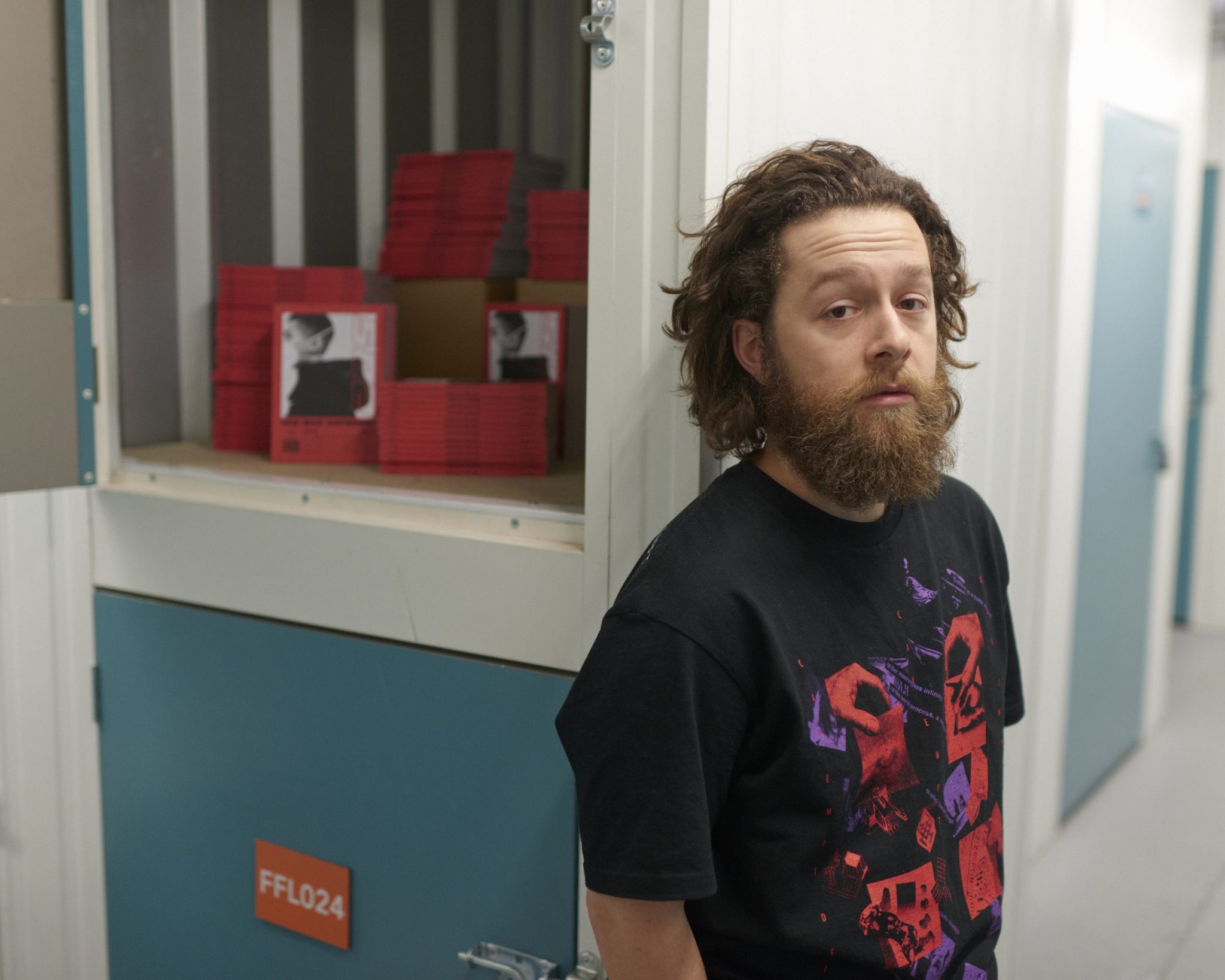
Seth and a storage locker full of magazines.
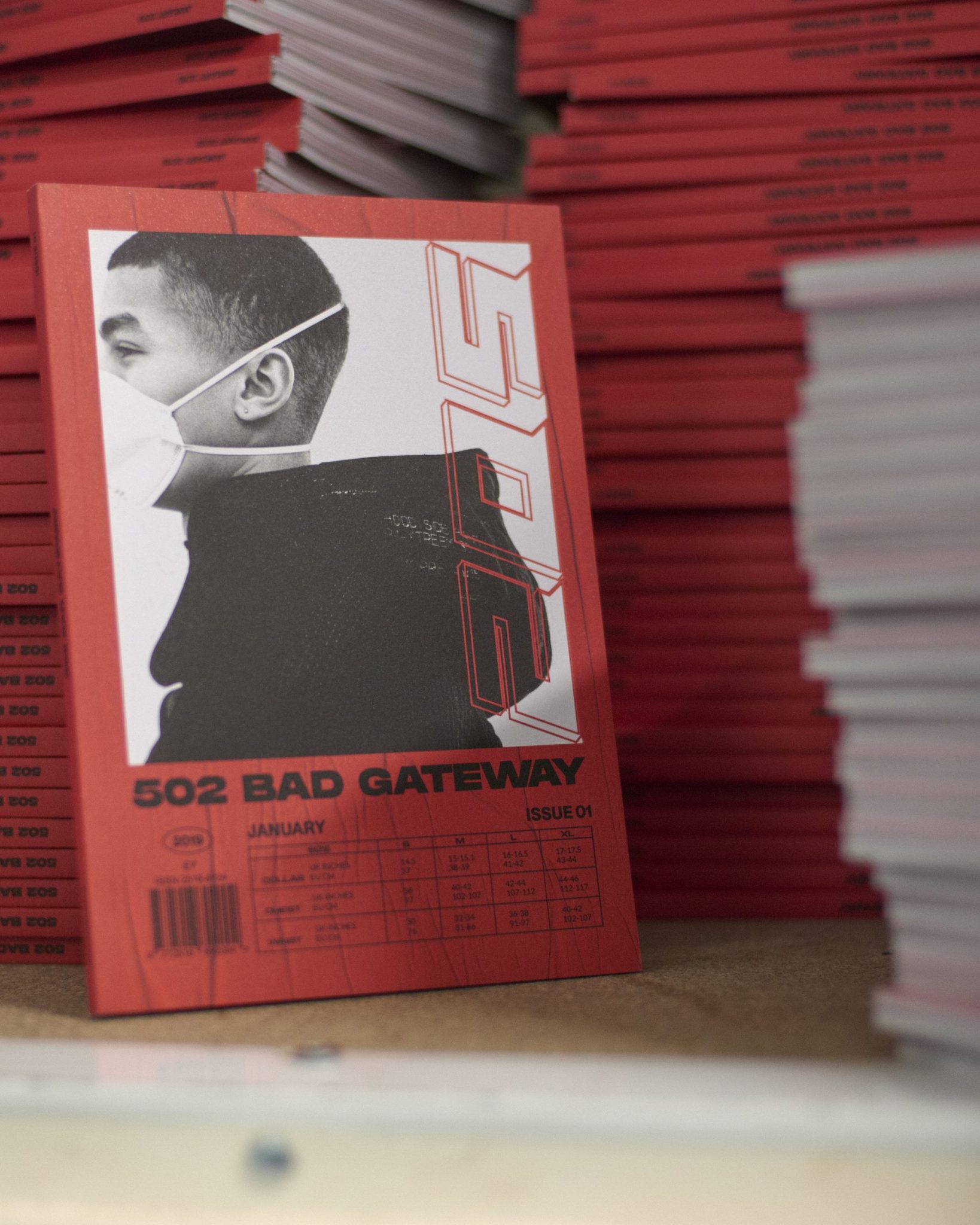
Charis: So we’ve been talking a lot about responsibility and these themes that came up across the interviews, I’m wondering if there’s something that after you finished that you thought, this is what I want someone to get from this publication?
Seth: No. There wasn’t really a conscious decision to do that. If we go back to thinking about the fact that it’s very much to do with myself, then I consciously put in people that I thought did things in the right way.
Charis: It’s in your editor’s letter too, that same idea about a feeling of what’s right.
Seth: Yeah, if you walked through a store and bought everything that you half liked, what would be the point? I think that you should wear things that you really love. I spend a lot of time in my own head wondering what’s the difference between fashion and style and what style actually means.
I think people use dress as a way of communicating, even if you’re the guy who’s wearing nondescript white trainers, dark blue jeans and a white t-shirt, that is still your choice of who you are.
You might cross the street to ask someone where they got their trainers from or if you saw someone in something that you really liked, you might go and talk to them or if you saw someone and couldn’t fathom why they dressed like that, you’re never going to go and speak to them.
So thinking about how and why you get your clothes is an extension of that. People asking where you get things from and you reply that you got it from eBay or a small designer who’s a friend, I think that’s a lot cooler and way more interesting than if it’s just a Gucci logo sweater but if that’s what you’re into I don’t want to be the guy who’s like, “You shouldn’t do that, you should only do what I say.”
Charis: Well, I do think what is compelling about 502 is that there is a sense of ‘you should do this’. Not in that tone of voice, not in that I’m better than you and this is the only correct way, but I do think what’s interesting is having a message.
That to me is what comes across because why would you want to go about and make your own publication when there are other men’s publications out there? It is because you have your own stance on things.
Seth: Yeah. That fits in very well actually. You can still enjoy those things, it’s like everyone enjoys fast food but you know it’s bad. There are things that don’t make the cut, out of my own experience, chopping those out of your life is ridiculously difficult.
If someone’s offering me something for free maybe I’m not saying no but when I’m making conscious decisions to buy things usually it’s off eBay or I’ve done copious amounts of research: what that brand is about and what that product represents to that brand.
This is going to sound so lame, but what I’ve always been interested in in a personal way is to build a wardrobe. I can say that everything I do, I have a reason for, so a lot of it’s sentimental and also the things I do keep, I keep for a very long time.
Charis: I think it’s okay to be proud of that or to own that about yourself and also for that to come across in 502. I think it’s evident in reading it and assuming that you continue it’s something that will continue to come across.
Seth: I was always going to write probably 80% of it and then it turned into 100% so when I gave it to my mum she said she could hear my voice when she read it.
What I want to do with the second issue is to get more people to write for it that aren’t me, to find people that have a similar outlook on things is both easy and hard. Can you find them and then find something for them to write about that fits in? I think that’s tricky.
Charis: When you started did you have a very solid expectation for what you wanted to get out of it and do you think you’ve got that?
Seth: Oh man, I think overall the only expectation I had of myself was to get it out. I wasn’t going into it thinking I’m going to sell enough to get my money back but I was thinking, if I can sell a few to people who aren’t my friends and family then that’d be amazing, so I’ve done that.
Expectations? Not really, I didn’t put many expectations on it from the out, it was just something that I ended up doing, I wanted to do it and I did it, that makes it sound very simple, it wasn’t. I think the hard bit in terms of expectation was actually finishing it.
It took me way longer than I thought it was going to, I wasn’t thinking I’d sell 10,000 or I want to get it into this shop, I just wanted to do it and then hopefully people would be into it. I guess the only expectation in that way is that people that I didn’t know would respect it and enjoy it.
Charis: I think it’s sufficient to celebrate completion. I think we don’t give enough credit to the effort that it takes to finish something and bring it to life but all of the unfinished things, we don’t see.
All of the unfinished projects that people have we don’t see. It seem on the surface that there’s loads of magazines out there but in reality who knows how many unfinished projects are in people’s computers and heads?
Seth: A couple of people I was showing it to were like, “Wow, I could not have been bothered to do that.” Equally, what you’re saying about celebrating completion, it’s so easy to compare yourself to… like personally or not or how is it doing versus everything else and there’s no point.
You might have something that’s amazing to 500 people or something that’s amazing to 10,000 people but it doesn’t make it any less amazing, you’re just stroking your ego if you thinking, “Oh, mine’s 10,000 people.” It’s a comparison that’s not worth it.
Charis: I agree. You kind of mentioned it already about wanting to do issue 2 with other contributors or more contributors. Do you have other plans of what’s next?
Seth: Yeah, so I gave myself a couple of months to start selling it through, getting it out there as much as possible and then I’ve got a loose idea of what I want it to be, I have a friend, a guy called Alex Powis who did Crepe City magazine and I was talking to him about it and he said you do a few things and you think it’s amazing and then you realize that everything in the magazine has to be like that.
That’s actually so true, I’m trying to make it at a level where every time you come to it it’s like whoa, what’s next? I feel like for a lot of this issue that’s exactly it, I guess I want to make it bigger and better and to meet more people through it.
To be able to create some kind of community around it would be brilliant and then in terms of actual nuts and bolts of the next issue, I’ve got a list of people I want to talk to and I think the theme would continue, I don’t think it’s just an issue 1 theme necessarily but I spent a lot of time trying to work out how you make something the same but different.
Charis: Lots of good plans. If you articulate it it’ll happen. Now that you’ve said it, now that this will be published you’ve got to do it.
Seth: No take backs.
Charis: That’s what I do, just say it out loud and then you have to do it.
Seth: It’s funny, I spent a lot of time not mentioning it to anyone because my biggest fear in doing it was someone asking how the magazine is going and me saying I failed.
So there’s loads of moments of me punching the air, jumping up from my desk and shouting yes. Equally, kind of having a meltdown and having to lie on the sofa and zone out and think about something else.
Charis: Yeah, I mean it’s a long slog, I’m not going to make it sound more pleasant than it is but when you committed to not just a stand alone thing but a thing that is issue 1 of a series it’s not just that you had to get to the end of producing this issue but now you’ve made a personal commitment to a thing that doesn’t end or might not end, it doesn’t have a definitive ending. I’m sorry, this is a very depressing thing to tell you.
Seth: No, I think it’s exciting. If I’d done it and everyone had gone, “Huh, yeah, maybe I’ll buy one.” I think I’d legitimately have had a meltdown but I think the reaction to it has been good, nobody’s picked it up and said it’s terrible or they don’t like it.
Everyone has been into it so it makes you feel confident that you could do it again. I never had any doubt that I could do it and I never doubted that I should. I took a little bit of time to make sure I actually wanted to but in the end I just decided to do it—I didn’t have anything to lose.
